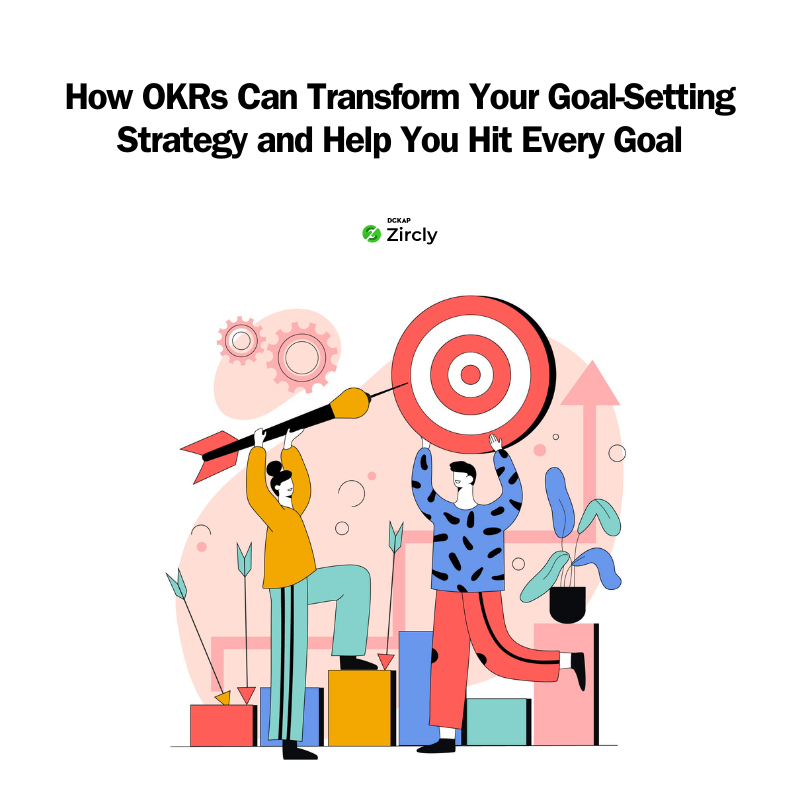In the world of goal-setting, especially organizational goal-setting, there exists a powerful framework that can transform the way teams are led and goals are achieved. Followed by the likes of Google and Microsoft, OKRs– Objectives and Key Results are an effective way to set, track, and stick to your goals. In this article, we break down OKRs, the OKR formula, their importance, types, advantages, and disadvantages, and see why they might be the solution you’ve been searching for.
What Are OKRs?
OKRs stand for Objectives and Key Results. OKR, as is evident from its name has two parts– Objectives and Key Results
- Objectives: Objectives are what you want to achieve. Ideally, they should be ambitious, qualitative, and time-bound.
- Key Results: Key Results are the measurable outcomes that indicate you’ve achieved your objective.
OKRs are a simple and effective goal-setting framework that helps teams and organizations define their objectives and track their progress. They have been proven to be effective by some of the biggest organizations all over the world.
Understanding OKR Scores and the Formula
An important part of the goal-setting process is understanding how successful your efforts toward achieving your goals have been.
The success of OKRs is measured by the progress you’ve made toward your goals, and OKR Scores are a handy way to do so.
OKR scores measure your progress. They are typically set on a scale from 0.0 to 1.0 or as a percentage. The OKR formula is straightforward:
OKR Score = (Progress Achieved / Total Key Results) x 100
For example, if your objective has three key results and you’ve completed two, your OKR score would be 66.7%.
The Importance of the OKR Formula
Another important aspect of OKRs that helps set them apart is the OKR Formula. The OKR formula is vital because it provides a clear, quantifiable way to measure success.
The OKR Formula is a template for writing Key Results in such a way that everyone understands how progress is tracked and what success looks like. The formula looks like this:
I/We will do X as measured by Y
Where X is the Objective you want to accomplish and
Y is the Key Result that, when accomplished, moves you closer to achieving the objective.
The transparency of the OKR Formula fosters accountability and keeps the team focused on what truly matters.
The Two Types of OKRs
Given the transparency of OKRs, there is an element of pressure that goals that are too ambitious will put on teams. To stay realistic while also being ambitious, there are two types of OKRs that teams and organizations can set, each with their own expectations.
Committed OKRs are the must-achieve goals. They are realistic and achievable within the set timeframe. Missing a committed OKR should be rare.
Aspirational OKRs are stretch goals. They are ambitious and challenging, pushing the team beyond their comfort zone. While not always fully achieved, they drive innovation and growth.
Aspirational OKRs are usually more effective when companies are trying to scale.
Advantages of OKRs
OKRs are measurable. Having goals that are measurable and therefore trackable has immense benefits, whether yours is a 10-people organization or a 10,000-people organization. Below is a brief description of some of them.
Alignment: OKRs align the entire organization’s efforts towards common goals. Everyone knows what the priorities are and works in unison.
Focus: By setting clear objectives and measurable key results, OKRs help teams focus on what’s important, avoiding distractions and spreading efforts too thin.
Transparency: OKRs are typically visible to everyone in the organization, promoting a culture of openness and shared understanding of goals.
Engagement: Regular check-ins and reviews ensure that progress is monitored, and teams stay engaged and motivated.
Disadvantages of OKRs
Despite their advantages, OKRs also have some drawbacks:
Overhead: Implementing OKRs can introduce additional administrative work, especially in the beginning.
Misalignment: Poorly set OKRs can lead to misaligned efforts and frustration if they are not clear or realistic.
Pressure: Aspirational OKRs, while motivating, can sometimes create undue pressure if not managed properly.
Conclusion: Why OKRs Are the Solution
For leaders struggling to meet yearly goals, OKRs can be a game-changer. They provide a structured yet flexible framework that aligns, focuses, and engages teams. By clearly defining what success looks like and how it will be measured, OKRs turn frustration into achievable milestones. Implementing OKRs might require effort initially, but the payoff in team performance and goal attainment is worth it.
Incorporate OKRs into your leadership strategy today, and watch as your organization transforms its approach to goal-setting and achievement.
At Zircly, we believe in building strong community cultures, and OKRs are a crucial part of that journey. Check out or OKR Module today, if you would like to set goals that you achieve in the time you say you want to achieve them.

